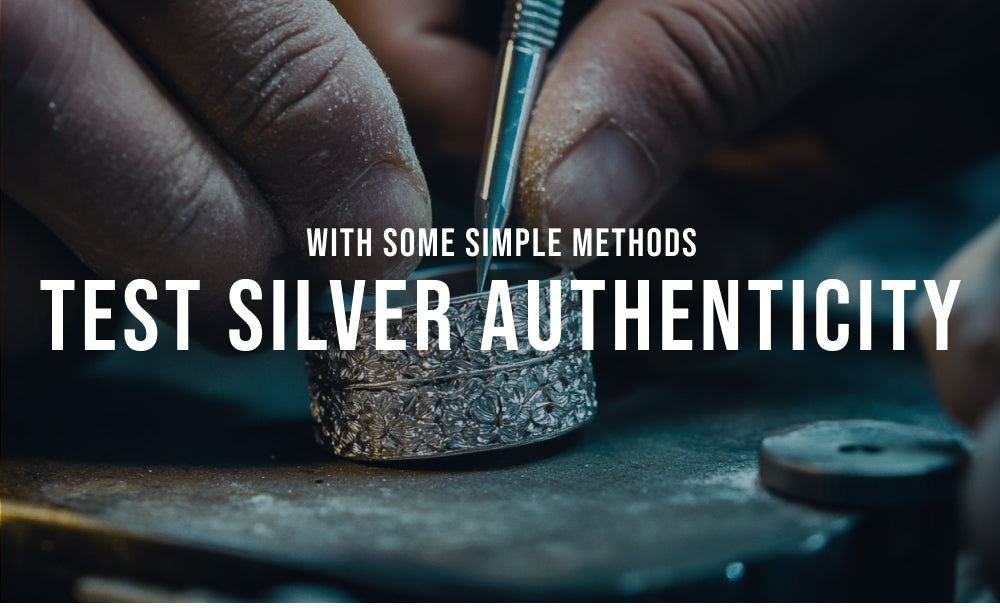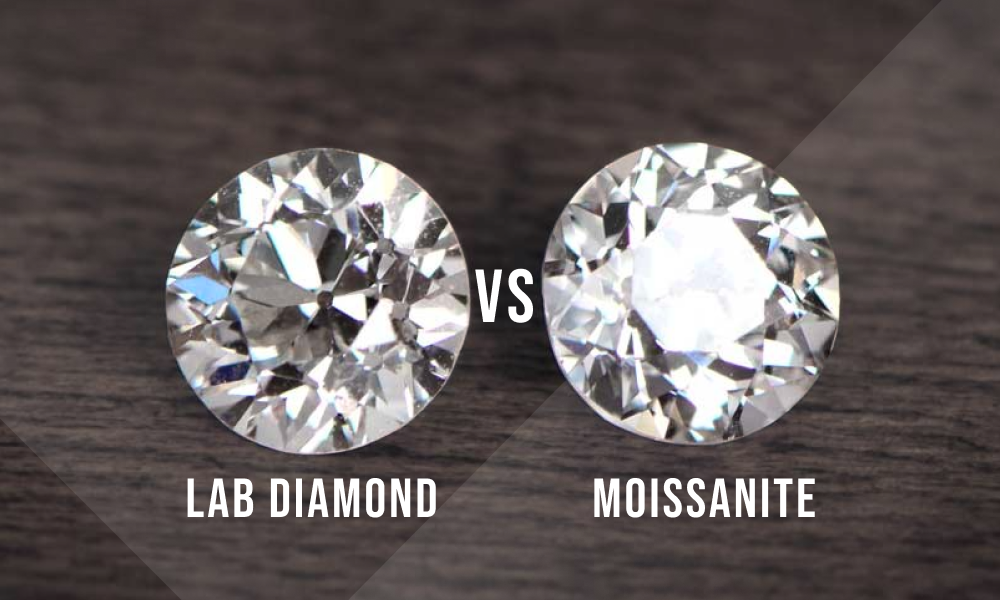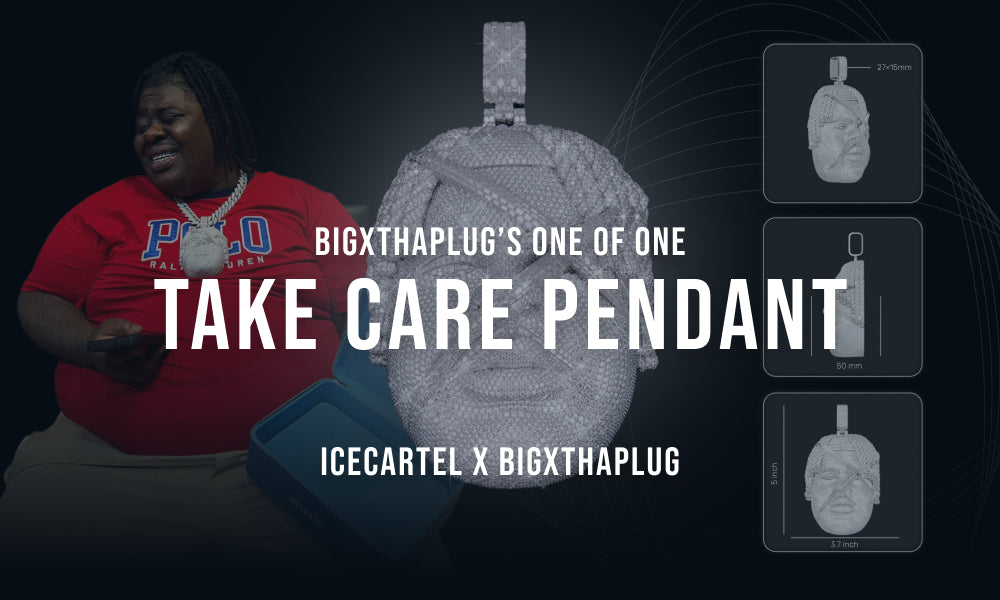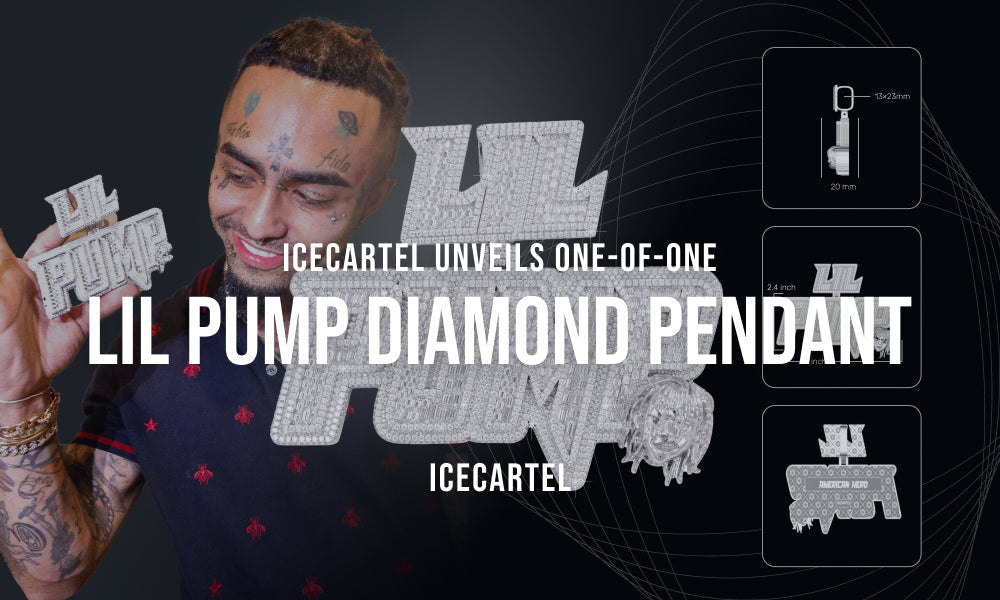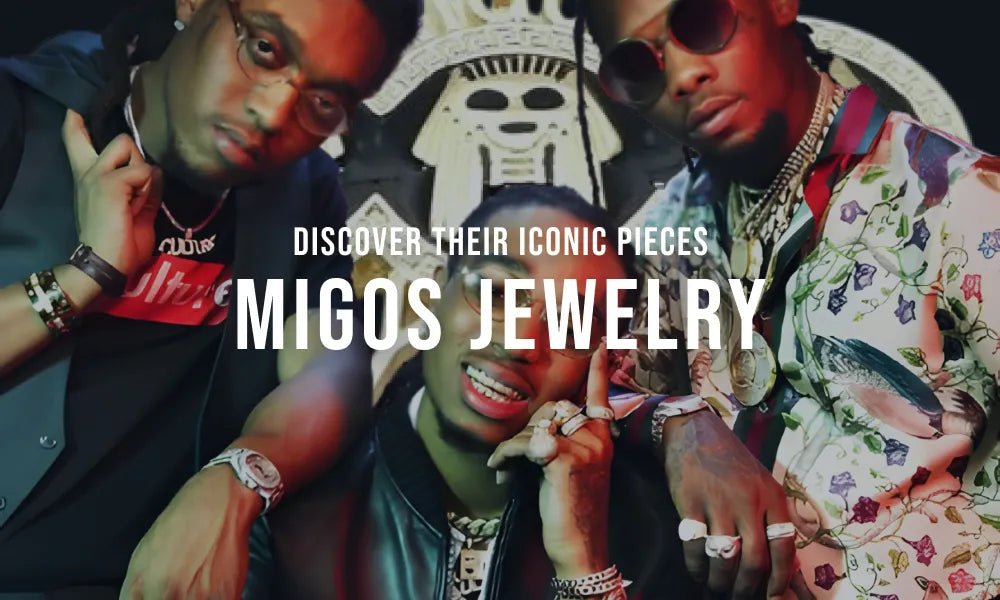Have you ever come across a piece of silver jewelry or flatware and wondered if it was genuine? The ability to authenticate silver is not just an impressive skill, but it’s also an essential one when it comes to purchases, sales, and collections. In this journey through the world of silver, we’ll equip you with the knowledge needed on how to tell if silver is real, distinguishing between the real deal and the duds.
Key Takeaways
👉 Understand the composition of sterling silver and other alloys to identify authenticity.
👉 Use hallmark identification, magnet test, ice cube test, sound test, sniffing test or rub tests for verification.
👉 Advanced methods such as chemical testing or taking it to a professional are recommended for more reliable results. Recognize tarnish as an important indicator of authenticity.
Understanding Sterling Silver and Its Alloys
Sterling silver, renowned for its lustrous finish and durability, is a favored material in the creation of fine silver jewelry and sterling silver flatware. It is composed of 92.5% silver and 7.5% of another metals, typically copper. The addition of these other metals, such as copper, bolsters the hardness of pure silver, making sterling silver a practical choice for items ranging from necklaces to forks. As the highest quality silver alloy, sterling silver continues to be a popular choice for consumers, especially considering how sterling silver reacts with minimal tarnishing over time.
But what about other types of silver? Nickel silver and silver-plated items, for instance, are different from sterling silver. Nickel silver is a silver-colored alloy that doesn’t contain any real silver, while silver-plated items are made of a base metal covered with a thin layer of silver.
As for sterling silver jewelry, it’s often rhodium-plated to protect it against scratches and tarnish, ensuring its stunning shine lasts longer. To maintain this shine, it’s essential to clean silver jewelry properly, including silver plated jewelry.
Hallmark Identification

Authenticating real silver jewelry items often begins with checking for the presence of markings like a stamp or hallmark. Numbers such as 925, 900, or 800 on silver items signify the purity level of the silver. For instance, a sterling silver piece marked with these numbers is likely genuine.
However, a word of caution: if a silver item lacks a stamp, it might be a sign of trouble. This could suggest that the silver is counterfeit or not sterling silver. If you spot the letters ‘STER’ or ‘IS’, they represent ‘sterling’ and ‘international silver’ respectively, indicating that the item is made with genuine silver. If there’s no number stamp, it might suggest a lower silver percentage. It could also mean that the object is silver-plated.
Learn about the purity of gold: Introduction to All Gold Karats: 9k, 10k, 14k, 18k, 22k, and 24k.
The Magnet Test

The magnet test is a quick and easy way to test the authenticity of silver. Here’s how to do it:
Get a magnet, preferably a small rare-earth magnet.
Hold the magnet close to the silver item and see if it sticks.
If the magnet doesn’t stick, it's a sign that the item is made of real silver.
Keep in mind, though, that while this test is effective at eliminating items with a ferromagnetic core, it’s not completely foolproof because the silver might be mixed with stainless steel (non-magnetic). But always remember that this test can only be a part of your overall judgment.
You'll Also Enjoy: How to Tell if a Cuban Link Chain is Real
The Ice Cube Test

Another intriguing method to test silver’s authenticity is through the ice cube test. This test leverages silver’s high thermal conductivity, which is the highest among metals. The rate at which an ice cube melts on a test silver piece can provide an indication of the silver’s authenticity.
Genuine silver, due to its high thermal conductivity, will transfer heat to the ice cube rapidly, causing it to melt faster than on other metals. This is why an ice cube melts quickly when placed on a silver item. A fun little race with an ice cube can thus offer a clue about your silver item’s authenticity!
The Sound Test
The sound test is another way to put your silver item to the test. Genuine silver produces a distinct, high-pitched ringing sound when tapped on a hard surface, setting it apart from other metals. This unique ringing sound, which lasts for a few seconds, can serve as an indicator of the item’s authenticity.
The test, often known as the ‘ping’ test, involves tapping the silver item with another metal. If it emits a melodious, bell-like ringing tone, it’s likely to be made of real silver. So, next time you come across a silver item, don’t hesitate to give it a little tap and listen to the tune it plays!
The Sniffing Test

While unconventional, the sniffing test can yield useful information about the authenticity of your silver item. Genuine silver should be odorless. Therefore, if you detect a distinct smell when you sniff your silver item, it could indicate that it’s not authentic.
This test might not be as scientific as the others, but it’s definitely worth a try!
The Rub Test

The rub test is another simple yet effective method to check if your silver item is genuine. Exposure to air causes silver to oxidize, leading to tarnishing and a black tint over time, which is why some silver jewelry turn black.
By rubbing a clean, white cloth on the silver item, you can check for black residue. Here’s what the results mean:
If a little bit of black residue comes off, it’s likely to be sterling silver.
If black marks are visible, the item is either silver or sterling silver.
The absence of these marks could mean the item is not sterling silver. When it comes to cleaning sterling silver flatware, this test can be a helpful first step.
The Bend Test
The bend test is another method to test the authenticity of your silver item. Genuine silver is malleable and should bend without breaking. This malleability is due to the composition of sterling silver, which includes copper to enhance its strength and durability.
The bend test involves gently trying to bend the silver item with your hands. If it bends easily without any signs of breaking or cracking, it is likely to be made of genuine silver.
Visual and Tactile Inspection
Visual and tactile inspection provide a straightforward means of checking your silver item’s authenticity. Visual indicators of authentic silver encompass markings or stamps such as ‘925’ or ‘Sterling’, which signify its purity, and the presence of oxidation or tarnish on the surface, indicating the item’s authenticity.
The texture of authentic silver can vary and may include a variety of finishes. Genuine silver also has a unique bright and shiny appearance, exhibiting a high level of reflectivity. Polishing a silver item can help reveal its authenticity, as genuine silver typically shows a degree of oxidization when polished.
Chemical Testing Methods
For a more advanced approach to determining your silver item’s authenticity, you may opt for chemical testing methods. One such method is the silver acid test, which involves the use of a corrosive chemical that reacts with the metal to verify its composition and authenticity.
Nitric Acid Test
The nitric acid test is a specific type of chemical test that can be used to verify the authenticity of silver. It involves applying reagent nitric acid, distilled water, and potassium dichromate to the silver item and observing the reaction. If the silver item turns a distinctive blood red color, it indicates that it’s authentic sterling silver. However, it’s important to note that this test should be conducted with extreme caution due to the corrosive nature of nitric acid.
The color reactions of the nitric acid test can be quite telling. Genuine silver will turn blood red when tested, while a greenish hue indicates fake silver. However, there are disadvantages and restrictions to this method, including the potential for damage to the silver surface and the need for a small testing area, which may not be suitable for certain valuable or delicate pieces.
Advanced Verification Techniques
Sometimes, the methods mentioned above may not suffice, especially for more valuable or intricate pieces. In such cases, advanced verification techniques can provide a higher level of certainty.
Take it to a professional

Seeking professional appraisal is one of the most reliable ways to authenticate your silver item. A certified appraiser can provide an expert opinion on the authenticity and value of your silver item. These professionals should possess:
Relevant academic qualifications
Years of experience
Current USPAP certification
Membership in professional organizations.
While the cost for such an appraisal can range between $300 to $1,000 or more, it’s often a worthwhile investment for more valuable pieces, usually to determine if gold jewelry is real, plated or solid.
Take it to a specialized lab
Taking your silver item to a specialized lab for testing is another advanced verification method. These labs use sophisticated instruments such as X-ray fluorescence (XRF) spectrometers to determine the authenticity of silver items.
Apart from XRF, other advanced testing methods such as fire assay, gravimetric lab testing, and chemical lab testing are employed to examine the purity and composition of silver items. While these tests are typically more expensive, they offer highly precise and dependable results, making them a worthwhile option for high-value or rare silver pieces.
Recognizing Silver Plated Items
Distinguishing silver-plated items from solid silver items is also important. Silver-plated items consist of base metals covered with a thin layer of genuine silver. Although they may look similar to solid silver items, their value and durability differ significantly.
There are several methods you can use to verify if an item is silver-plated. Here are some options:
Look for markings such as “EP,” “EPNS,” or “Silver on copper,” which indicate silver-plating.
Perform the flake test.
File a small part of the item to see if there’s another material underneath.
The Role of Tarnish
The role of tarnish in identifying real silver is often underestimated. When exposed to air, silver oxidizes, leading to tarnishing, which gives the metal a black tint over time. This process is a clear indication that silver is real.
This natural oxidation process can actually serve as an indicator of genuine silver, as authentic silver will naturally tarnish over time. If your silver item doesn’t tarnish, it could be an indication that it’s not made of real silver. The bleach test, where silver tarnishes and turns black upon contact with bleach, can also help confirm the authenticity of the silver.
Summary
From understanding the composition of sterling silver and its alloys to conducting various tests and inspections, we’ve journeyed through the fascinating world of silver authentication. Whether you’re a collector, seller, or simply a curious individual, being able to authenticate silver is a valuable skill.
Remember, there isn’t a one-size-fits-all method for all silver items. The best approach often involves a combination of various methods, and when in doubt, don’t hesitate to seek professional help. After all, knowledge is power, and in this case, it just might be the key to unlocking the truth behind your silver treasures.
Frequently Asked Questions
How can you tell real silver from fake?
You can tell real silver from fake by holding a magnet up to the item, tapping it with a coin to hear the bell-ringing sound and smelling for an odorless surface. Silver is not magnetic and should not stick to the magnet, so if it does it's likely a ferromagnetic core which is not silver.
What is the vinegar test for silver?
The vinegar test for silver is a process where a drop of vinegar is applied to a scratched surface of the silver item to check its authenticity. If the silver is real, the surface won't get tarnished, whereas fake silver will cause it to tarnish.
How do you test silver with a lighter?
To test if silver is genuine, you can use a lighter to lightly heat a small area. If it leaves behind a dark, black stain, it is authentic silver. You can also use two matchsticks instead of a lighter.
Is silver magnetic?
Silver is not magnetic, but it is diamagnetic. When a suitable magnet is held at 45 degrees to it, the magnet will slide down slowly due to an electrical field.
What happens when silver comes in contact with bleach?
When silver comes in contact with bleach, it tarnishes and turns black, indicating its authenticity.












